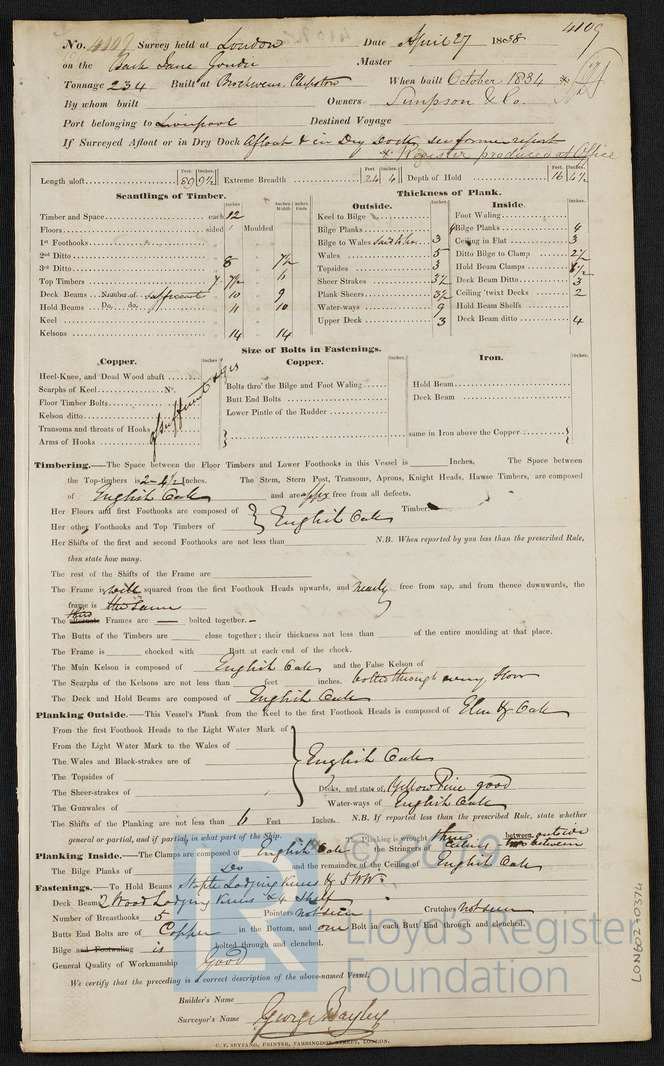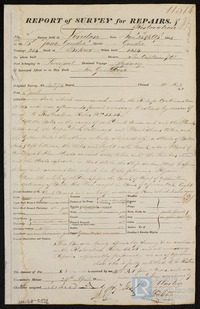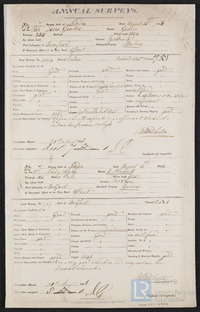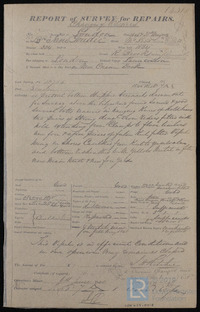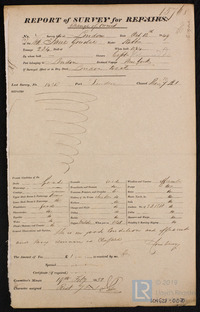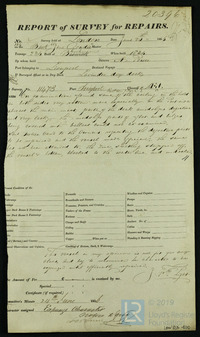- Related documents Related
- Full details Details
- Report document? Report?
Use the data export button to extract customised data sets from the Ship Plan and Survey Report Collection. Available in TSV and CSV formats.
Date recorded as the time of writing.
27/04/1838
The year in which a vessel’s construction is completed.
1834
The port or place in which the vessel’s construction took place, at the time of writing.
Chepstow
Unique internal numbers used for identifying, referring and retrieving a specific survey report.
4109
The listed port to which a given vessel belongs.
Liverpool
The individual and/or organisation listed
Simpson & Co
Location where the document is written.
London
Location where a vessel’s survey was undertaken.
London
Date of the meeting of the Classing Committee.
01/05/1838
A vessel’s means of propulsion.
Sail
Is the steamer assisted by sail?
No
Confirmation as to whether the vessel was equipped with refrigeration machinery to aid in the transport of frozen or chilled cargo/goods.
No
Does the vessel possess an auxiliary power source?
No
Is electric lighting fitted to the vessel?
No
Physical extent of a record.
1
Name of ship as recorded on the record
Jane Goudie
The process of transferring a vessel to water, but not necessarily her completion.
__/10/1834
Abbreviations of the names of ports with Lloyd’s Register survey offices.
Lon
Official administrative title (often printed) of a record used by Lloyd’s Register or external organisations.
No title
Records that constitute Lloyd’s Register’s first official encounters with a specific vessel, e.g. a survey report.
Y
Name of the individual/entity/organisation responsible for authoring the record
George Bayley
Name of surveyor.
George Bayley
Classification symbol assigned to a vessel by Lloyd’s Register’s Classing Committee denoting the quality of construction and maintenance.
10A2
Physical arrangement of a ship’s masts, sails and rigging.
Bk - Barque
Predominant material(s) utilised in a vessel’s construction.
Wood
A ship’s total internal volume in ‘register tons’ (replaced by gross tonnage post 1982).
234
Is machinery fitted at the aft of the vessel?
No
Generally a smaller additional auxiliary boiler (often used while the vessel is at port).
No
Name of the Proving House responsible for the public testing and certification of a vessel’s anchors and/or chain cables.
No
Report an issue with this document
Have you noticed missing or incorrect data or images for this document?
Please let us know and we will rectify the issue as soon as possible.

